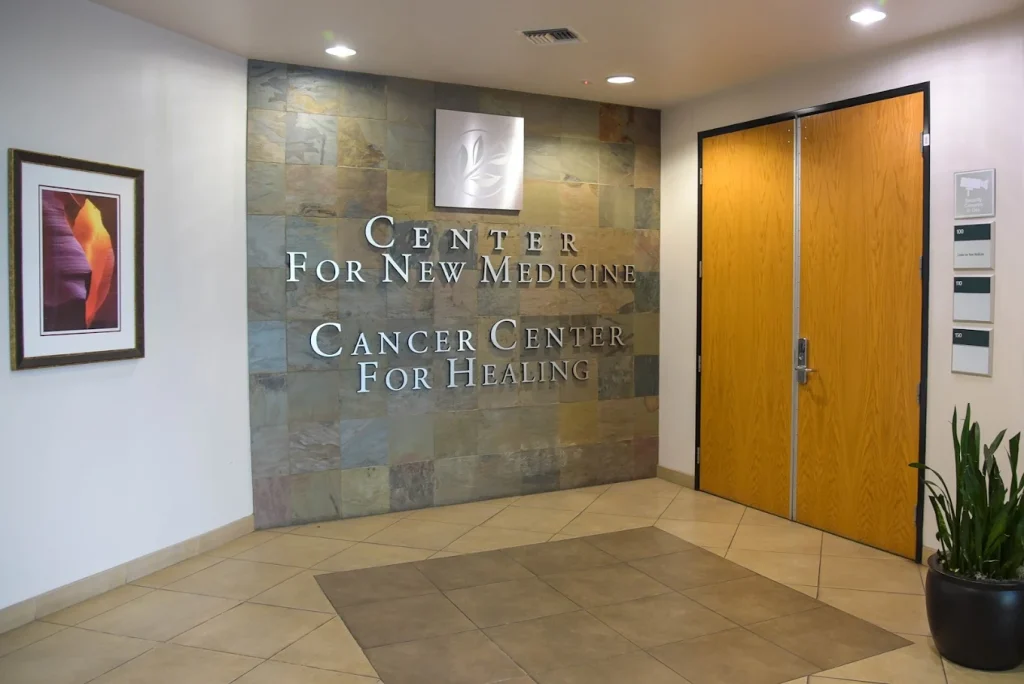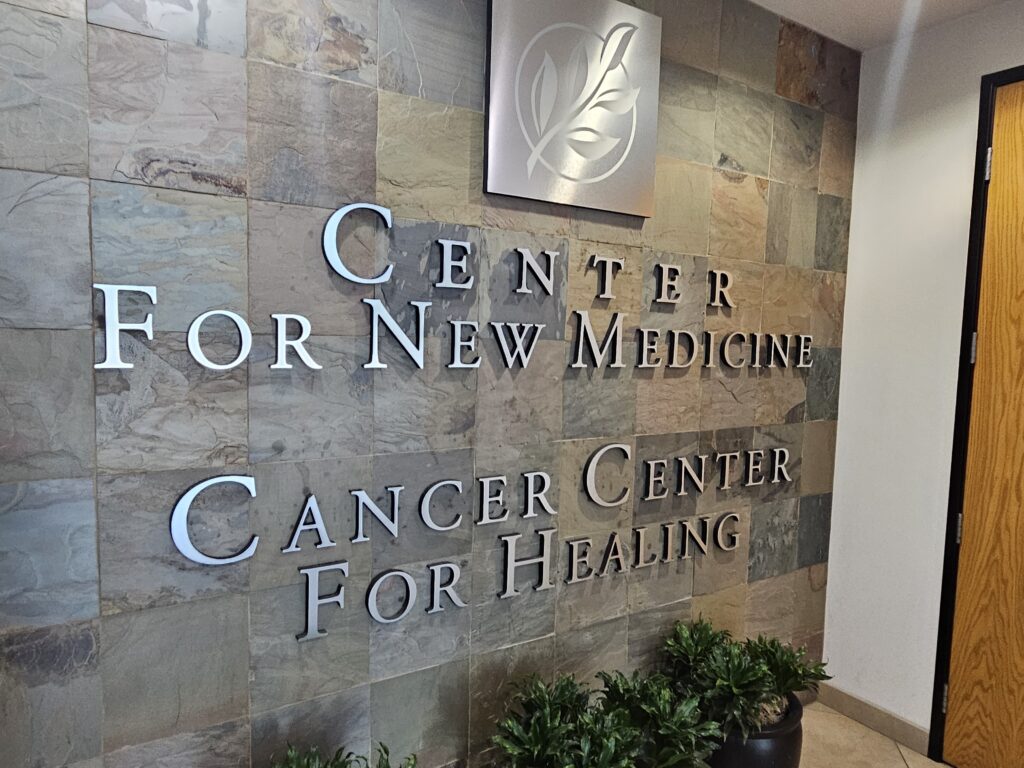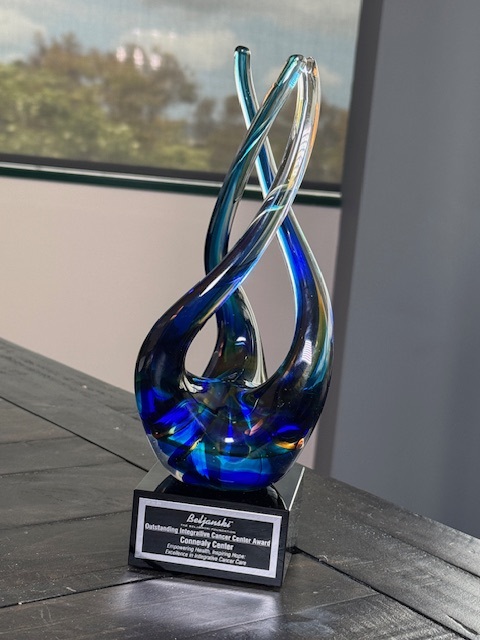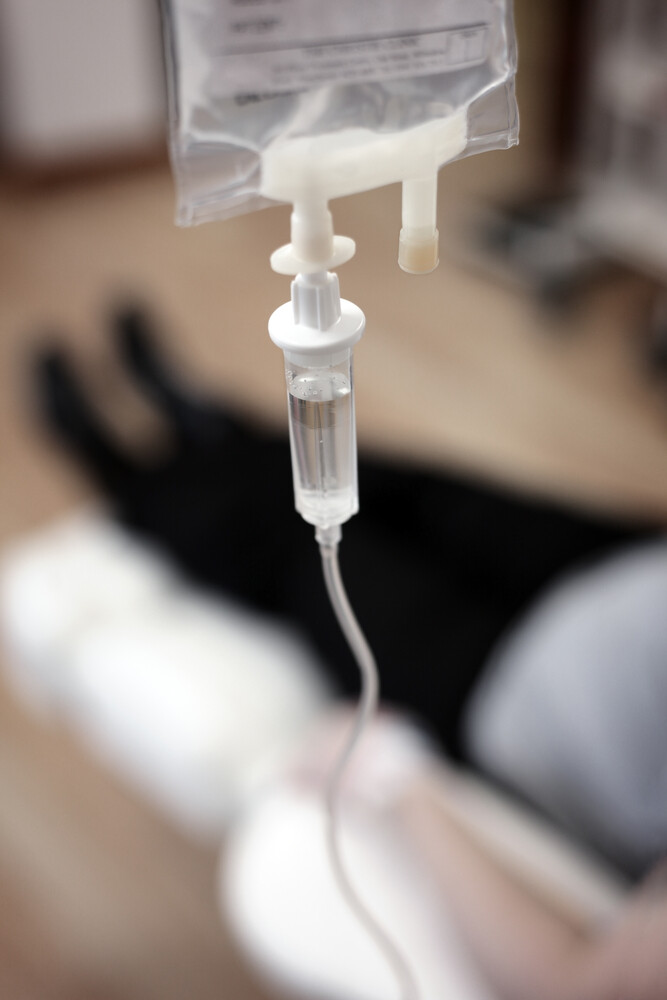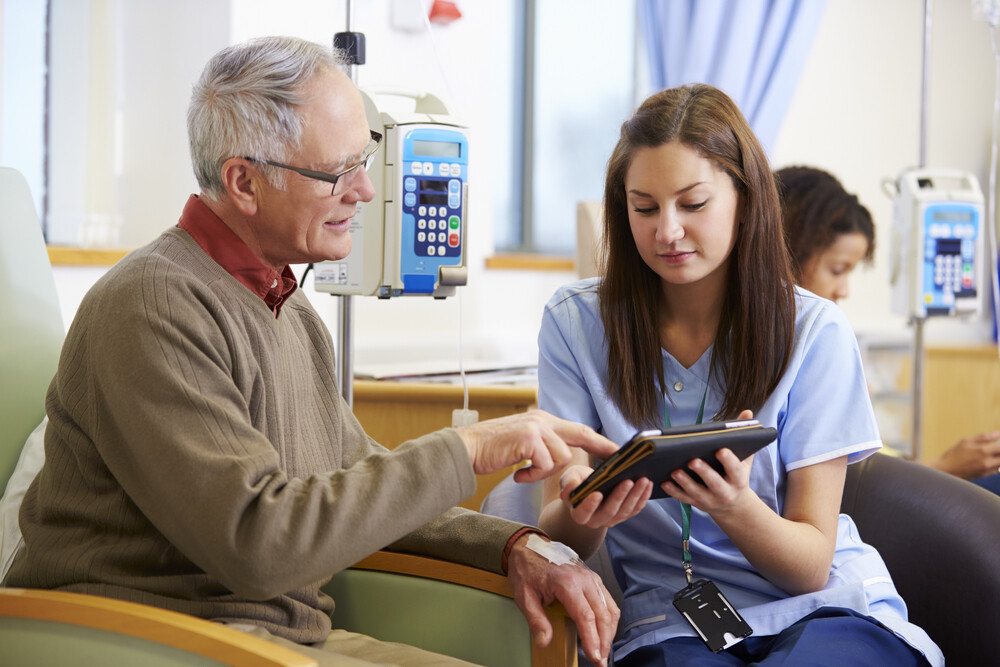Leukemia is a cancer that affects the blood and bone marrow, and it can often present symptoms such as fatigue, easy bruising, and frequent infections. One of the less common symptoms of leukemia is the appearance of blood spots on the skin.
These spots are known as petechiae, and they may be small and pinpoint, or they may appear as larger patches. They can vary in color, from red to purple, and tend to develop on the legs, feet, and ankles. Additionally, they may appear on the arms, face, and neck.
While petechiae can be a symptom of other conditions, such as a viral infection or a reaction to medication, they are also a hallmark symptom of leukemia. Therefore, it is crucial to be aware of their appearance and understand their significance.
Key Takeaways:
- Leukemia can cause blood spots on the skin, known as petechiae.
- Petechiae may appear as small or large patches and can be red or purple.
- They tend to develop on the legs, feet, and ankles, but can also appear on other parts of the body.
Understanding Leukemia and Its Effects on Blood Cells
Leukemia is a type of cancer that affects blood cells, particularly white blood cells. In leukemia, the bone marrow produces abnormal white blood cells that don’t function properly. These abnormal cells are known as leukemia cells and can accumulate in the bone marrow and blood, disrupting the proper functioning of the bone marrow and leading to various symptoms.
There are different types of leukemia, and each type affects a different type of white blood cell. The most common types of leukemia include acute lymphoblastic leukemia, acute myeloid leukemia, chronic lymphocytic leukemia, and chronic myeloid leukemia.
Leukemia can cause blood spots on the skin, also known as petechiae. These are tiny red, purple, or brownish spots that appear on the skin, indicating bleeding under the skin. The spots are usually flat and don’t itch or cause any pain.
Leukemia can also cause other symptoms, including fatigue, weakness, fever, frequent infections, swollen lymph nodes, easy bruising or bleeding, and bone pain.
What Are Leukemia Blood Spots?
Leukemia blood spots, also known as petechiae, are tiny pinpoint-sized red spots that appear on the skin. They are caused by bleeding from small blood vessels under the skin’s surface, resulting in the accumulation of blood in the surrounding tissue. Leukemia blood spots can be an early sign of leukemia, a type of cancer that affects the blood cells.
Leukemia blood spots vary in size and color and usually appear in clusters. They can be flat or slightly raised and may look like a rash. The spots are typically red, but they may also appear purple or brown. In some cases, leukemia blood spots may be itchy or tender to the touch.
| Characteristics of Leukemia Blood Spots | |
|---|---|
| Appearance | Tiny pinpoint-sized red spots that appear in clusters |
| Color | Red, purple, or brown |
| Texture | Flat or slightly raised |
| Symptoms | May be itchy or tender to the touch |
Leukemia blood spots are a common symptom of acute myeloid leukemia (AML) and acute lymphoblastic leukemia (ALL), but they can also occur in other types of leukemia, as well as in other medical conditions. It is essential to consult a healthcare provider if you notice any unusual spots on your skin or experience other symptoms that may be related to leukemia.
Causes of Leukemia Blood Spots
The development of leukemia blood spots is often a result of the underlying leukemia itself, which affects the blood cells and vessels in the body. Leukemia is a type of cancer that begins in the bone marrow, the spongy tissue inside bones that produces blood cells. This cancer causes the body to produce abnormal white blood cells, known as leukemia cells, which do not function properly. As these abnormal cells accumulate in the blood and bone marrow, they can interfere with normal blood cell production and lead to complications such as bleeding, bruising, and blood spots on the skin.
In addition to leukemia, other factors that can cause blood spots on the skin include infections, medication side effects, and injuries that damage blood vessels. However, if blood spots appear without an obvious cause, it is important to seek medical attention to determine if they are related to an underlying health condition such as leukemia.
Symptoms of Leukemia Blood Spots
Leukemia blood spots are not the only symptoms of this type of cancer, and it’s important to be aware of the other signs that may indicate the presence of leukemia. In addition to blood spots, some common symptoms of leukemia include:
- Unexplained weight loss
- Fatigue and weakness
- Fever and chills
- Night sweats
- Bone pain or tenderness
- Swollen lymph nodes
- Frequent infections
If you experience any of these symptoms, it’s essential to seek medical attention immediately. Early detection and diagnosis can make a significant difference in the success of leukemia treatment.
In addition to these general symptoms, there are specific symptoms associated with leukemia blood spots. These include:
- Easy bruising
- Tiny red or purple spots on the skin
- Frequent nosebleeds
- Bleeding gums
- Heavy menstrual bleeding
While leukemia blood spots may not be painful or cause discomfort, they should not be ignored. If you notice any unusual skin discoloration or have any of the symptoms mentioned above, it’s important to speak with a healthcare professional as soon as possible to determine the underlying cause.
Diagnosing Leukemia Blood Spots
If you are experiencing symptoms of leukemia or notice blood spots on your skin, it is important to seek medical attention promptly. A healthcare provider can perform a series of diagnostic tests to determine if leukemia is the underlying cause of the blood spots.
The diagnostic process may include a physical examination to check for other signs of leukemia, such as swollen lymph nodes or an enlarged spleen. Blood tests may also be performed to assess the number and types of blood cells present in the body, as well as any abnormalities in their appearance or function.
In some cases, a bone marrow biopsy may be necessary to confirm a leukemia diagnosis. During this procedure, a small sample of bone marrow is removed from the hip bone and examined under a microscope to determine if cancerous cells are present.
Early detection of leukemia is important for successful treatment and management. If you are experiencing any unusual symptoms or have concerns about blood spots on your skin, make an appointment with a healthcare provider as soon as possible.
Treatment Options for Leukemia
There are several treatment options available for leukemia, depending on the type and stage of the disease. At the Cancer Center for Healing, patients receive personalized treatment plans that may include one or a combination of the following:
| Treatment Type | Description |
|---|---|
| Chemotherapy | A systemic treatment that uses drugs to destroy cancer cells throughout the body. |
| Radiation Therapy | A localized treatment that uses high-energy radiation to kill cancer cells in a specific area of the body. |
| Targeted Therapy | A treatment that uses drugs to target specific genes or proteins that promote the growth and survival of cancer cells. |
| Immunotherapy | A treatment that harnesses the body’s immune system to recognize and destroy cancer cells. |
It is important to note that each treatment option carries its own set of risks and benefits. Patients at the Cancer Center for Healing work closely with their healthcare team to make informed decisions about their treatment plan.
Holistic Approach at the Cancer Center for Healing
The Cancer Center for Healing in Irvine, CA offers a holistic approach to cancer care for all types of cancer, including leukemia. Led by Dr. Leigh Erin Connealy, their team of experts provide personalized treatment plans that incorporate integrative therapies and supportive care to address the whole person, not just the disease.
At the Cancer Center for Healing, they understand that cancer treatment can be overwhelming and strive to support patients and their families throughout the treatment journey. They offer a range of holistic modalities such as acupuncture, nutrition counseling, mind-body techniques, and more to alleviate symptoms and promote healing.
Dr. Connealy and her team believe that disease prevention is just as important as treatment. They focus on empowering their patients with the tools and resources they need to make healthy lifestyle choices. With an emphasis on nutrition, exercise, and stress management, they strive to improve overall wellness and promote long-term health.
Comprehensive Cancer Care at Cancer Center for Healing
The Cancer Center for Healing offers a comprehensive approach to cancer care, providing personalized treatment plans that address the unique needs of each patient. Under the guidance of Dr. Leigh Erin Connealy and her team of experts, patients receive integrative therapies that combine traditional medical treatments with complementary approaches, such as nutrition, exercise, and stress management.
The Cancer Center for Healing also offers supportive care services to help patients manage their symptoms and improve their quality of life. This includes psychosocial support, pain management, and palliative care.
If you or a loved one has been diagnosed with leukemia or is experiencing unusual symptoms, contact the Cancer Center for Healing at (949) 680-1880 to schedule a consultation. Their compassionate team of healthcare professionals will guide you through the treatment process and provide the support you need to improve your health and well-being.
The Role of Diet and Lifestyle in Leukemia Management
While medical treatment is essential in managing leukemia, lifestyle changes can also play a crucial role in improving outcomes. A healthy diet and regular exercise can help boost the immune system and reduce the risk of infections, which is particularly important for leukemia patients who are often more susceptible to infections.
Additionally, reducing stress levels through practices like meditation or yoga can help improve overall well-being and promote faster healing. Patients are encouraged to avoid smoking and limit alcohol consumption as both can have negative impacts on the immune system.
The Cancer Center for Healing takes a holistic approach to cancer care, recognizing the importance of nutrition and lifestyle in supporting the body’s natural healing processes. They offer personalized nutrition plans and guidance on healthy lifestyle habits, as well as access to a range of integrative therapies such as acupuncture and massage.
The Importance of Nutrition
A well-balanced diet can help patients maintain strength during treatment and can even help reduce side effects. Patients are advised to consume plenty of fruits and vegetables, whole grains, lean protein, and healthy fats. The Cancer Center for Healing also recommends avoiding processed foods and refined sugars, as they can contribute to inflammation and weaken the immune system.
The Cancer Center offers nutritional counseling services to provide patients with personalized guidance on maintaining a healthy diet. The team works closely with patients to understand their individual nutritional needs and develops a plan to meet these needs while also addressing any unique dietary restrictions or preferences.
The Benefits of Exercise
Regular exercise can help patients maintain muscle mass, improve circulation, and reduce fatigue. Additionally, exercise has been shown to have a positive impact on mood and can help reduce stress levels.
The Cancer Center for Healing works with patients to develop an exercise plan that is safe and appropriate for their individual needs. They may recommend activities such as walking, yoga, or swimming, and can provide guidance on how to safely incorporate exercise into a treatment plan.
Overall, a holistic approach that incorporates nutrition, exercise, and stress reduction can help improve outcomes for leukemia patients. The Cancer Center for Healing is committed to providing comprehensive cancer care that addresses all aspects of a patient’s health, including their diet and lifestyle habits.
Schedule a Consultation at the Cancer Center for Healing
If you are concerned about leukemia blood spots, or have been recently diagnosed with leukemia, it is essential to seek medical attention right away. The Cancer Center for Healing in Irvine, CA, offers personalized and comprehensive cancer care that takes a holistic approach to cancer treatment.
Under the guidance of Dr. Leigh Erin Connealy, their team of experts offers integrative therapies, supportive care, and personalized treatment plans to meet each patient’s unique needs.
To schedule a consultation at the Cancer Center for Healing, call (949) 680-1880. Take control of your health and start on the path to healing today.
Supportive Care for Leukemia Patients
Supportive care is an essential aspect of leukemia treatment. Patients with leukemia may experience various physical and emotional challenges throughout their treatment journey, and supportive care aims to alleviate these difficulties.
Psychosocial support is a crucial component of supportive care for leukemia patients. Dealing with cancer can take a toll on a patient’s mental health, and counseling or therapy can help patients cope with the emotional impact of their condition. Support groups can also be beneficial as they provide a venue for patients to connect with others who understand their experience.
Pain management is another important aspect of supportive care. Leukemia and its treatment can cause pain, and treating it effectively can improve a patient’s quality of life. Palliative care can also be used to manage pain and other symptoms and improve overall well-being.
The Cancer Center for Healing in Irvine, CA, provides comprehensive supportive care tailored to each patient’s unique needs. They offer a range of services, including counseling, pain management, and palliative care, to help leukemia patients manage their symptoms and treatment experience.
Research and Advancements in Leukemia Treatment
Research in leukemia treatment is ongoing, with new advancements emerging regularly. One promising area of research involves targeted therapy, which uses drugs to target specific mutations or proteins found in cancer cells. This approach can help minimize damage to healthy cells and reduce side effects.
Another area of focus is immunotherapy, which aims to harness the power of the immune system to attack cancer cells. This type of therapy has shown great promise in treating some forms of leukemia.
Advancements are also being made in the development of new drugs and treatment regimens. Clinical trials are being conducted to test the safety and effectiveness of these new therapies, with the hope of providing more options for patients in the future.
The Cancer Center for Healing is committed to staying up-to-date with the latest research and advancements in leukemia treatment. They strive to provide their patients with the most innovative and effective treatment options available.
Conclusion
In conclusion, understanding what leukemia blood spots look like is crucial for early detection and diagnosis. As discussed in this article, these spots appear as tiny red or purple dots on the skin and are often accompanied by other symptoms such as easy bruising and frequent nosebleeds. If you notice any of these symptoms or blood spots on your skin, it is important to seek medical attention immediately.
The Cancer Center for Healing in Irvine, CA offers comprehensive and holistic cancer care for all types of cancer, including leukemia. Their personalized treatment plans, integrative therapies, and supportive care approach ensure that patients receive the best possible care throughout their treatment journey. In addition, the Cancer Center for Healing stays at the forefront of medical advancements and offers the latest treatments and therapies.
If you or a loved one have been diagnosed with leukemia, don’t hesitate to schedule a consultation with the Cancer Center for Healing by calling (949) 680-1880. Their compassionate and knowledgeable team will guide you through every step of your treatment plan, providing comprehensive support along the way. Remember, early detection and treatment can make all the difference in improving outcomes and quality of life for leukemia patients.
FAQ
Q: What do leukemia blood spots look like?
A: Leukemia blood spots, also known as petechiae, appear as tiny red or purple spots on the skin. They may be similar in appearance to small pinpricks or rash-like clusters.
Q: What are the characteristics of leukemia blood spots?
A: Leukemia blood spots are typically small in size and may vary in color from red to purple. They often do not blanch or disappear when pressure is applied to them. The texture of these spots may be flat or slightly raised.
Q: What causes leukemia blood spots?
A: Leukemia blood spots are caused by the underlying leukemia itself, which affects the normal functioning of blood cells and vessels. The impaired clotting ability and fragility of blood vessels can lead to the appearance of these spots.
Q: What are the symptoms associated with leukemia blood spots?
A: Symptoms of leukemia blood spots may include easy bruising, frequent nosebleeds, and the presence of numerous tiny red or purple spots on the skin.
Q: How are leukemia blood spots diagnosed?
A: Leukemia blood spots are diagnosed through physical examinations, blood tests, and bone marrow biopsies. These diagnostic procedures help determine the presence of leukemia and its associated symptoms.
Q: What are the treatment options for leukemia?
A: Treatment options for leukemia include chemotherapy, radiation therapy, targeted therapy, and immunotherapy. The choice of treatment depends on several factors, such as the type and stage of leukemia.
Q: What holistic approaches are available at the Cancer Center for Healing?
A: The Cancer Center for Healing in Irvine, CA offers a holistic approach to cancer care. This includes personalized treatment plans and integrative therapies under the expertise of Dr. Leigh Erin Connealy.
Q: What is comprehensive cancer care at the Cancer Center for Healing?
A: The Cancer Center for Healing provides comprehensive cancer care, which includes personalized treatment plans, integrative therapies, and supportive care. They prioritize a patient-centered approach to address the physical, emotional, and psychological aspects of cancer.
Q: How does diet and lifestyle affect leukemia management?
A: Diet and lifestyle play a crucial role in managing leukemia. The Cancer Center for Healing emphasizes the importance of nutrition, exercise, and stress management in their treatment plans to support overall well-being and enhance treatment outcomes.
Q: How can I schedule a consultation at the Cancer Center for Healing?
A: To schedule a consultation at the Cancer Center for Healing, please contact (949) 680-1880. Their dedicated team will assist you in setting up an appointment and provide further guidance on their holistic cancer care services.
Q: What supportive care is available for leukemia patients?
A: Supportive care for leukemia patients includes psychosocial support, pain management, and palliative care. The Cancer Center for Healing offers comprehensive support services to help patients cope with the physical and emotional challenges of leukemia.
Q: What recent research and advancements have been made in leukemia treatment?
A: Recent research and advancements in leukemia treatment have shown promising results, leading to potential new therapies and improved outcomes. The Cancer Center for Healing remains committed to staying at the forefront of these medical advancements for the benefit of their patients.


